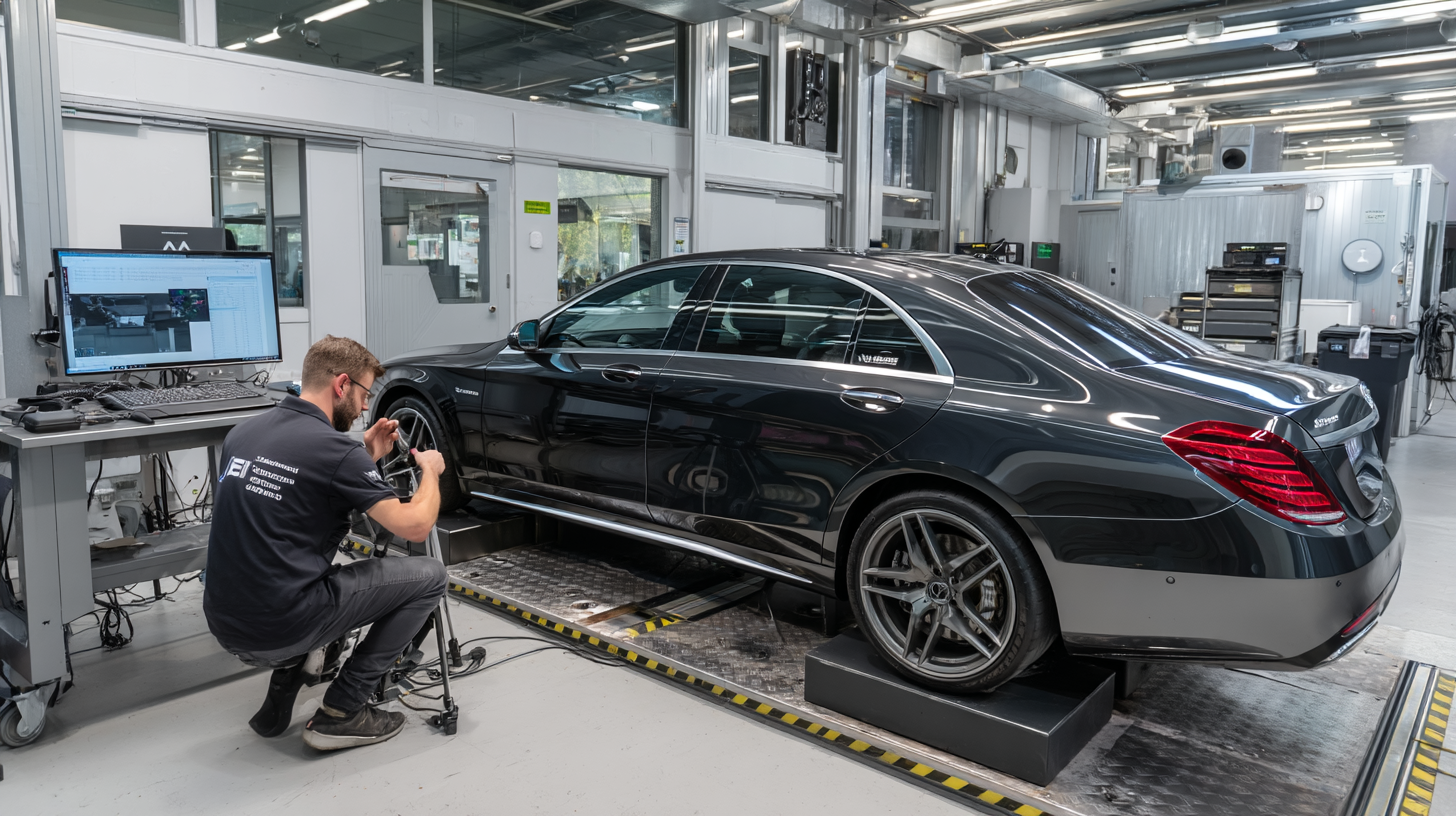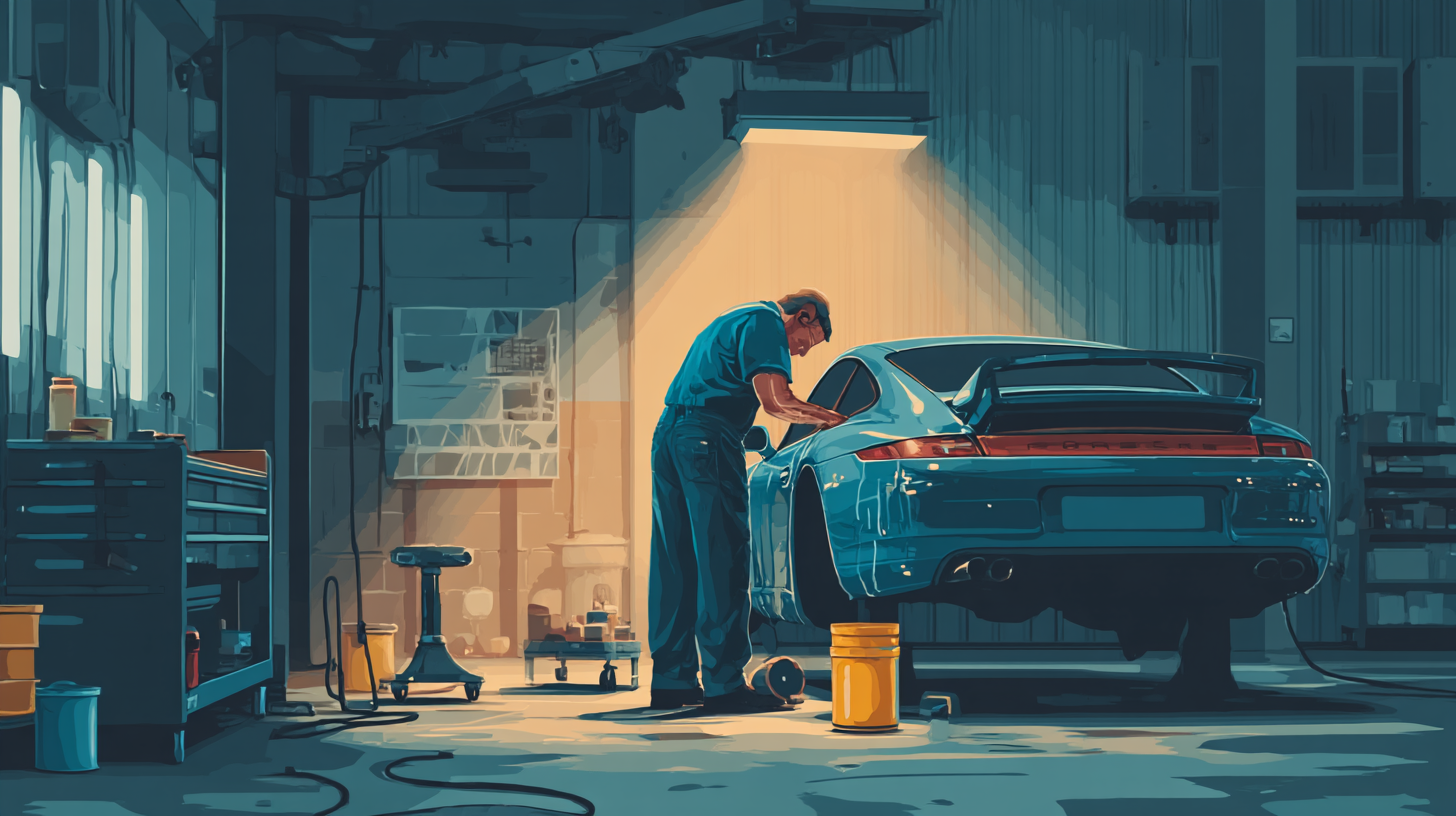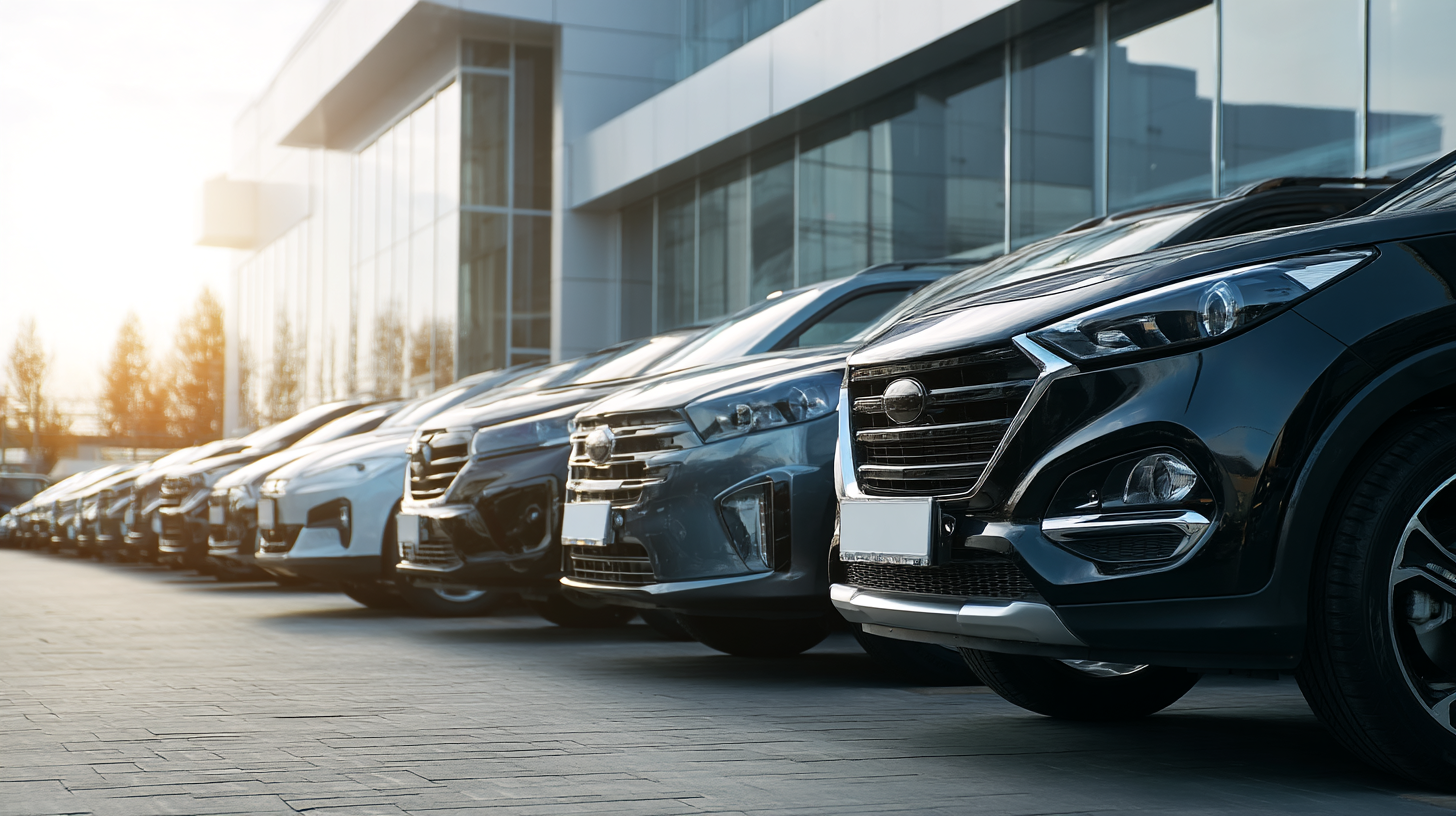Understanding the Importance of ADAS Calibration
Modern vehicles are engineered with Advanced Driver Assistance Systems (ADAS) technologies, and understanding what is ADAS calibration is critical for ensuring your vehicle’s safety features function correctly. At Re-Lux Collision we specialize in precision service and want to explain clearly how ADAS calibration safeguards your vehicle’s performance, reliability, and your peace of mind.
What Are Advanced Driver Assistance Systems (ADAS)
Advanced Driver Assistance Systems (ADAS) refer to a suite of complex systems built into modern vehicles that assist the driver, detect potential hazards through light detection and automatically adjust the vehicle’s systems. These include adaptive cruise control, autonomous emergency braking, lane departure warning, blind spot monitoring, rear cross traffic alert, and more. ADAS features rely on a network of ADAS sensors, front-facing camera sensors, ADAS cameras, forward radar sensors, rear radar sensors, ultrasonic sensors, and other ADAS components to gather data about the vehicle’s surroundings. If those systems are not properly aligned or calibrated, this can lead to system malfunctions, false alerts, or safety systems failing to react when needed. According to industry resources, even a small misalignment can impair system performance.
Why ADAS Calibration Is a Critical Step

When a vehicle undergoes any repair that affects its exterior geometry, sensor alignment, windshield position, or steering wheel calibration, the underlying driver assistance systems ADAS can be thrown out of proper alignment. That’s when ADAS calibration becomes necessary. Proper calibration ensures the vehicle’s ADAS system continues to detect potential hazards, functions as designed, and meets the manufacturer’s specifications. Industry sources emphasize that calibration must be aligned to those specifications or else safety features such as autonomous emergency braking, lane keeping assist, and blind spot detection may degrade.
What Exactly Is ADAS Calibration?
In simplest terms, ADAS calibration is the process of aligning and programming all the sensors, cameras, and control modules in a vehicle’s ADAS system so that the system interprets data correctly. It involves adjusting camera sensors, radar sensors, steering angle sensors, and other ADAS components to the exact positioning the manufacturer requires. According to one guide: “ADAS calibration is the process of physically aligning the sensors, cameras and other features that make up the system.”
The importance of precise calibration cannot be overstated. Because the vehicle’s brain relies on accurate input from the sensors and cameras to detect objects, lane markings, traffic, pedestrians, and other vehicles, misalignment means the vehicle’s systems might not “see” what they should or might misinterpret what they see. That could affect autonomous emergency braking, adaptive cruise control, lane keeping assist, and more.
Common Triggers for ADAS Calibration
You might wonder when your vehicle will need ADAS calibration. Here are typical scenarios that our team at Re-Lux Collision encounters:
- A windshield replacement that affected a camera or front-facing sensor mounted behind the glass.
- A front or rear collision repair, including front end repairs or bumper replacement or sensor replacement.
- Airbag deployment requiring sensor recalibration.
- Removal or replacement of forward radar sensors or rear radar sensors.
- Suspension repair, alignment work or changes that affect the vehicle’s geometry or ride height, sometimes tied to wheel alignment procedures.
- Repair work that disturbs steering angle sensors, steering wheel position, or any of the sensors and cameras tied to the ADAS system.
- Any modification, structural shift or vehicle work that could alter the precise positioning of the sensors relative to the vehicle.
Because collision repair often involves multiple of these elements, we make sure that at Re-Lux Collision every vehicle is evaluated for whether ADAS recalibration or a full calibration is required. This protects your vehicle safety, maintains system performance and ensures your car’s ADAS features stay functional.
Types of ADAS Calibration: Static Calibration vs Dynamic Calibration

It’s important to understand that there are two primary calibration types, and the correct one depends on vehicle make/model and the extent of repair.
Static Calibration
Static calibration is performed while the vehicle is stationary, in a controlled environment (usually inside the shop). It uses calibration targets, special equipment and a scan tool to align sensors and cameras. Reflective surfaces must be minimized, the floor must be level, lighting must be controlled, and sensor modules must be positioned precisely according to factory data.
Dynamic Calibration
Dynamic calibration requires driving the vehicle under defined conditions to verify and adjust the sensors and cameras while in motion. This is not the same as a “test drive.” Dynamic calibration requires driving the vehicle while the system interacts with the road, lane markings, moving vehicles, and environment. The scan tool monitors the process and adjusts accordingly.
Why Both Might Be Needed
Many late-model vehicles require a combination of static calibration (to physically align sensors) and dynamic calibration (to verify system performance under real conditions). Our technicians follow strict OEM procedures and manufacturer specifications to determine the exact ADAS calibration process for your vehicle.
How Our ADAS Calibration Process Works at Re-Lux Collision
At Re-Lux Collision we treat ADAS calibration with the same level of care and precision as any structural or paint repair. Our process is designed to deliver proper calibration, documented results and restored safety:
- Pre-scan and diagnostics: We start by scanning your vehicle’s ADAS system codes and verifying the status of the ADAS sensors, cameras, radar modules, steering angle sensors and other relevant components.
- Repair & parts installation: Before calibration begins we ensure any required structural repair, glass replacement (such as windshield replacement), sensor replacement or alignment is completed to manufacturer specifications.
- Calibration setup: Once the sensors are installed properly, we position calibration targets, ensure the bay is level and free of reflective surfaces, confirm correct environmental conditions and connect an OEM-grade scan tool.
- Calibration execution: Depending on the vehicle, the ADAS calibration process proceeds with static calibration and if required dynamic calibration. Every step is aligned to the manufacturer’s data.
- Post-scan and verification: After calibration is completed we perform a post-scan to confirm that all ADAS systems are active and operating correctly.
- Final test and documentation: We conduct a validation test (road test if necessary), produce documentation of calibration, record sensor alignment results and hand over your vehicle with confidence that the vehicle’s systems are properly calibrated.
This structured method ensures that when you drive away, your vehicle’s ADAS features function as designed, safeguarding you and your passengers.
Why Precise ADAS Calibration Means Safety

Safety is non-negotiable when Advanced Driver Assistance Systems are involved. These systems exist to reduce human error, detect hazards and automatically apply safety interventions like autonomous emergency braking or adaptive cruise control. When sensors or cameras are misaligned, or if ADAS recalibration was skipped, the vehicle may fail to respond correctly. This could lead to delays in braking, false alerts, the ADAS features not activating, or worse. Industry analysis shows proper alignment of sensors and cameras significantly affect performance of forward collision warning, lane departure and braking systems.
Delivering precise ADAS calibration is also about protecting your investment. Mis-calibrated vehicles may suffer from increased liability, reduced resale value and potential warranty exposure. When we perform our calibration service at Re-Lux Collision, we document it clearly for your records and for your insurer’s or manufacturer’s warranty reference.
Common Myths and Misunderstandings
Here are a few common misconceptions and the facts behind them:
- Myth: Calibration is only needed after a major accident.
Fact: Even a minor windshield replacement, sensor removal or wheel alignment can trigger a need for calibration. - Myth: A simple test drive is sufficient.
Fact: No – a dynamic calibration is a formal process, not just a casual drive. It must meet defined speed, lane marking and sensor activation criteria. - Myth: Any shop can do it without special equipment.
Fact: Proper calibration requires manufacturer-specific data, a scan tool, calibration targets, controlled setup, qualified technicians and accurate procedures. Skipping these increases risk.
How ADAS Calibration Differs from Wheel Alignment
While both wheel alignment and ADAS calibration involve precision and geometry, they address different systems. Wheel alignment focuses on the angles of the wheels relative to the vehicle’s frame and road surface. ADAS calibration addresses the positioning, aiming and programming of ADAS sensors, cameras and radar units so the vehicle’s safety algorithms function correctly. According to one guide: “ADAS calibration vs wheel alignment: it is worth noting that ADAS calibration ensures the car’s driver assistance features function correctly.”
It’s possible to perform proper wheel alignment yet still have mis-calibrated ADAS systems if sensor alignment wasn’t addressed. That’s why we incorporate ADAS calibration into our quality services when relevant.
The Cost of Skipping ADAS Calibration
Choosing to skip or neglect calibration may seem to save time or money, but it carries hidden risks.
- The vehicle’s sensor inputs may be inaccurate or invalid, leading to safety systems failing to activate or producing false alerts.
- The vehicle’s system performance may degrade and the driver may incorrectly rely on safety warnings that do not behave as expected.
- Post-repair inspection, warranty claims or insurance requirements may ask for proof of calibration. Without that documentation your coverage or future claims could be affected.
- Liability risk: if a mis-calibrated system contributes to a crash, the repair facility, technician or vehicle owner may face consequences.
At Re-Lux Collision our goal is to protect you from these outcomes by ensuring your vehicle receives proper calibration and full documentation of our work.
How to Choose the Right Shop for Your ADAS Calibration Needs

When your vehicle requires calibration, it’s essential to work with a provider that understands these systems, invests in equipment and follows the manufacturer’s data. Here’s what to look for:
- Technicians trained in ADAS calibration equipment and manufacturer specifications.
- A shop that offers both static calibration in a controlled environment and dynamic calibration when required.
- Transparent documentation of the calibration process, including sensor alignment results and system verification.
- A facility that integrates calibration as part of full collision repair, glass replacement, sensor replacement or other services.
At Re-Lux Collision we fulfill all these criteria. Our facility is equipped with OEM-grade calibration tools, our technicians are certified and we treat calibration as an integral part of quality repairs.
FAQs About ADAS Calibration
How long does ADAS calibration take?
It varies by vehicle and system complexity. A simple camera-only calibration might take under an hour. More involved procedures with multiple sensors, radar, cameras and dynamic testing can take several hours.
Can I drive my car if calibration isn’t done yet?
Technically you might be able to, but we strongly advise against it. An uncalibrated ADAS system may be unreliable or inactive and compromise the vehicle’s safety.
Is ADAS calibration covered by insurance?
Yes, when calibration is required following qualifying collision repairs, glass replacements or sensor replacements, it is typically covered. At Re-Lux Collision we can assist with the insurance documentation.
Does every vehicle have ADAS?
Not every vehicle, but most modern vehicles manufactured in the last several years include one or more ADAS systems. As those systems become standard, calibrations are more common.
What happens if calibration isn’t performed correctly?
Improper calibration can result in safety systems like adaptive cruise control, autonomous emergency braking or lane keeping assist not activating, activating incorrectly or delivering false alerts. That’s why precise calibration matters.
Final Thoughts
Understanding what is ADAS calibration isn’t just technical, it’s about your safety, your vehicle’s performance and your peace of mind. At Re-Lux Collision we treat calibration with the seriousness it deserves, integrating it into every appropriate repair and providing full documentation of our work. If your vehicle has undergone a windshield replacement, been in a collision, had sensor or radar repairs or shows warning lights related to your Advanced Driver Assistance Systems ADAS, don’t wait. Contact our team, schedule your ADAS calibration today and drive with confidence that your vehicle’s safety systems are properly calibrated. Get your free estimate now and let us restore your car to its full, factory-level performance.




